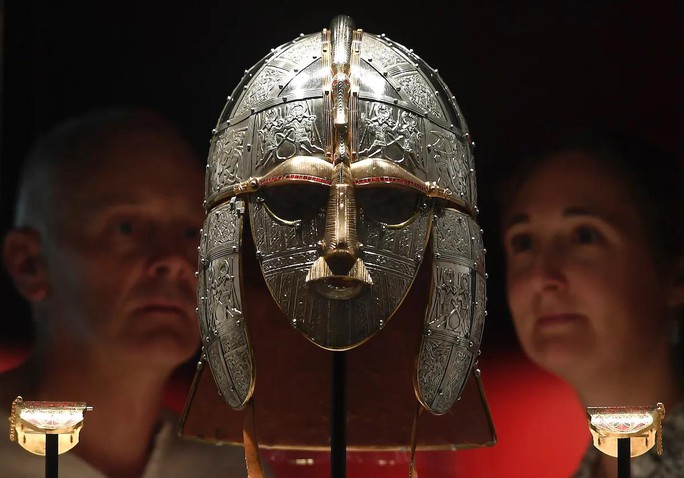British archaeologists are constantly “lost” by ancient Anglo-Saxon tombs whose remains analysis results are completely at odds with the lavish burial items they brought with them.
Writing on The Conversation , Dr. James Davison, a researcher in Medieval History at the University of Liverpool (UK), said Anglo-Saxon tombs were once known for their clear gender division through burial items. .
For example, male warriors were buried with weapons, equipment, and riding gear; next toancient tombof ladies of the time with jewelry, sewing tools, beads…
However, as techniques developed and enabled archaeologists to study the remains in detail, it was discovered that a small number of graves were gender-reversed: The women rested as one. Warriors and men were buried in feminine clothing.

The helmet of an Anglo-Saxon warrior is displayed in the museum. Sometimes it is found in graves with female remains – Photo: AP
The appearance of such strange ancient tombs is so common that a hypothesis has been put forward: The definition of “transgender” for modern people may have appeared in very ancient times, recognized before it was discovered. interrupted for a long time.
These particular tombs all belong to the Early Anglo-Saxon period (circa 450-750 AD).
Therefore, detailed research on this special burial method is expected to add special pages in British history.
Dr Davison’s team examined 11 graves from that period in Buckland’s pre-Christian cemetery, which were marked as “distinct”.
For example, the person in grave number 30 was determined to be “definitely male” through tests based on the skeleton. However, he was buried with a silver-plated brooch, a silver pin, 84 beads, a silver pendant… showing the noble status of a lady.
Meanwhile, grave number 93 is clearly female, but next to it there are swords, spear tips, decorative shield pieces, bronze bracelets, bronze rings… male-style, showing that it is a warrior.
With women’s graves, there are other, more convincing explanations: It could be a family heirloom buried with a woman of noble status or who was especially loved; or simply she is a female warrior.
But there is also evidence that allows us to infer that the two people mentioned above are a transgender woman and a transgender warrior who are completely wealthy and respected in their community.
“Although cross-cutting approaches cannot provide a clear explanation for burials outside traditional Anglo-Saxon understandings of gender, the insights they lead to are based on evidence the same evidence” – Dr. Davison wrote.
According to him, these special burials should be separated and included in mainstream scholarship to provide a new perspective on the English-speaking world.
Archaeologists also hope to find more ancient tombs like this, and maybe one of them will hold something that explains the mystery more clearly.





